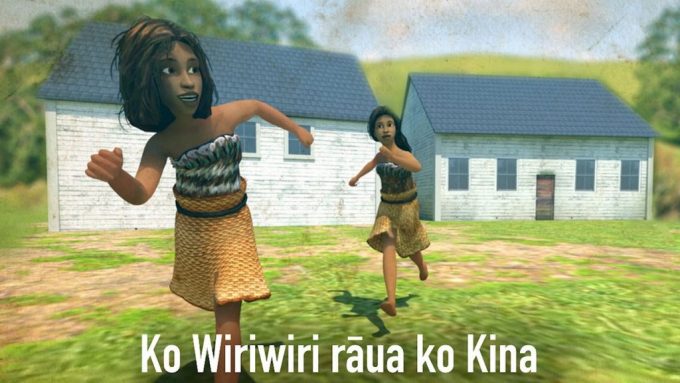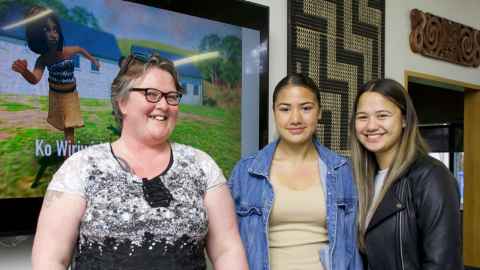New app brings history and te reo alive

Intended as a resource for primary school classrooms, Ko Wiriwiri rāua ko Kina draws on the history of the first school in Aotearoa, which opened in Hohi, Rangihoua, Bay of Islands in 1816.
Designed in an attractive animated digital format, the story follows the adventures of two fictional girls, Wiriwiri and Kina, as they start school at Hohi together and learn to write their first letters and syllables in te reo.
It features the voice talent of Auckland teenagers Breeze and Tyme Harema-Watts, and although aimed at te reo speakers and learners, users can also access the English version.
The app is a collaboration between University of Auckland writer and researcher Ruth Lemon and Kiwa Digital, a Māori-owned Auckland-based software developer which specialises in Indigenous language revitalisation.
A professional teaching fellow in the University’s Faculty of Education and Social Work, Ruth Lemon says the story explores the dynamics between the missionaries and Māori, and addresses the common misunderstanding that missionaries were the main actors in establishing the first schools for Māori.

“As the resource illustrates, Māori were active partners in the establishment of the first school. The Pākehā teacher needed to learn many new things, including learning the Māori language, and Māori teaching and learning approaches,” she says.
The app’s special features include a way to create and record your own pepeha (personal introduction) and the ability to click on each individual word for pronunciation help. It also offers curriculum links, learning activities, a historical timeline for printing and sharing and an extensive list of further resources.
To make sure Ko Wiriwiri rāua ko Kina was historically accurate, Ms Lemon drew on the research of Faculty of Education and Social Work colleague Professor Alison Jones and Professor Kuni Jenkins of Te Whare Wānanga o Awanuiārangi. Māori medium educator Hēmi Dale wrote the te reo Māori story and Dr Waldo Houia and Dr Katarina Edmonds, both now at Waikato University, collaborated on the teachers’ notes.
Kiwa Digital’s CEO Steven Renata believes that long-term language preservation plans will only be implemented successfully if they have technology solutions at their heart.
“Technology is opening up exciting new opportunities for Indigenous groups, with immersive technology allowing Indigenous perspectives to be communicated in unique new ways,” he says.
Ko Wiriwiri rāua ko Kina can be downloaded from the App Store or Google Play. Its production was supported by the Ministry of Education’s Te Aho Ngārahu fund, an initiative aimed at improving the access to quality local curriculum resources in te reo Māori.
Hohi 1816
Ruth Lemon is also the researcher and writer of Hohi 1816, a historical board game intended as a resource for early childhood, primary and secondary school teacher preparation. Themes of the game include the different motivations of settlers and Māori in the days of early engagement in Aotearoa, New Zealand, prior to the Treaty of Waitangi.
Hohi 1816 was designed in collaboration with Richard Durham, a learning designer in the Faculty of Education and Social Work and Minty Hunter and Bek Farr from Nectarine Ltd, a New Zealand-based graphic design company.
The game is now available to order as a teaching resource on the internet and was supported through contestable funding at the University of Auckland. See Hohi1816.nz for more information.









